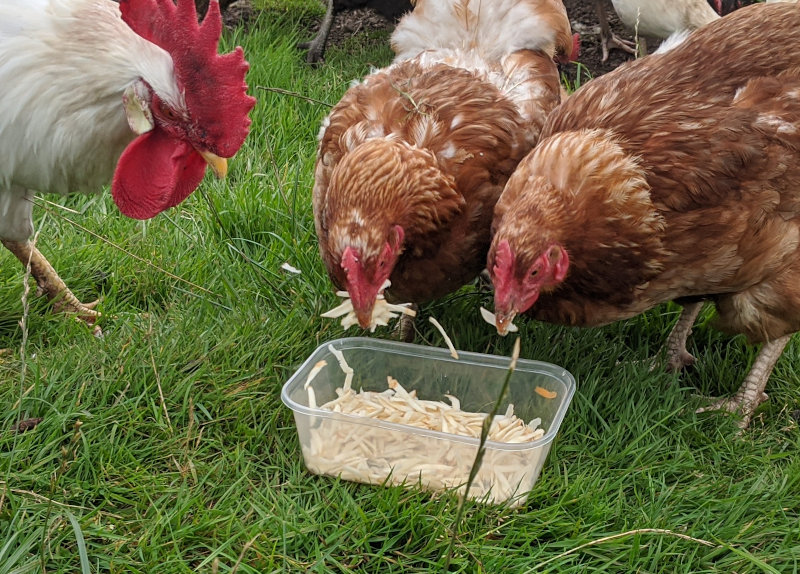Can chickens eat parsnip?

Parsnips are usually cooked, but it can also be eaten raw and they have a somewhat sweet taste, like carrots.
The parsnip is high in vitamins and minerals, especially potassium and contains antioxidants and both soluble and insoluble dietary fibre.
Can chickens eat parsnips?
Chickens can be fed parsnip roots only and not the green foliage. Use as a treat or hang whole in the run to peck at for entertainment. Feed parsnips cooked or raw.
Do chickens like parsnips?
My chickens love parsnip root and you can feed the parsnip peelings left over from preparing your dinner.
Below: My chickens gobbling down grated parsnip.
Can chickens have parsnips tops and greens?
If you grow parsnips in your garden then you will know they are a hardy root vegetable covered by a lush green top even into the winter when other crops have long since died down.
It seems a shame not to be able to feed these lush greens to your flock but the green shoots and leaves of parsnips must be handled with great care as they are potentially poisonous.
The sap contains furanocoumarins, a phototoxic chemical that cause blisters on the skin when it is exposed to sunlight, a condition known as phytophotodermatitis. Symptoms include redness, burning, and blisters and affected areas can remain sensitive and discoloured for up to two years.
The number of reports of people experiencing toxic symptoms after coming into contact with parsnip foliage is small in number compared to the number who grow the crop.
The problem is most likely to occur on a sunny day when gathering foliage or pulling up old plants that have gone to seed.
The toxic properties of parsnip foliage are resistant to heating and storage and can persist for months.
Toxic symptoms can also affect livestock and poultry in parts of their bodies where their skin is exposed.
How to feed parsnips:
Hand the roots whole for the birds to peck at or feed grated.
Parsnips can be fed raw or cooked, just don't give the greens to be on the safe side.
